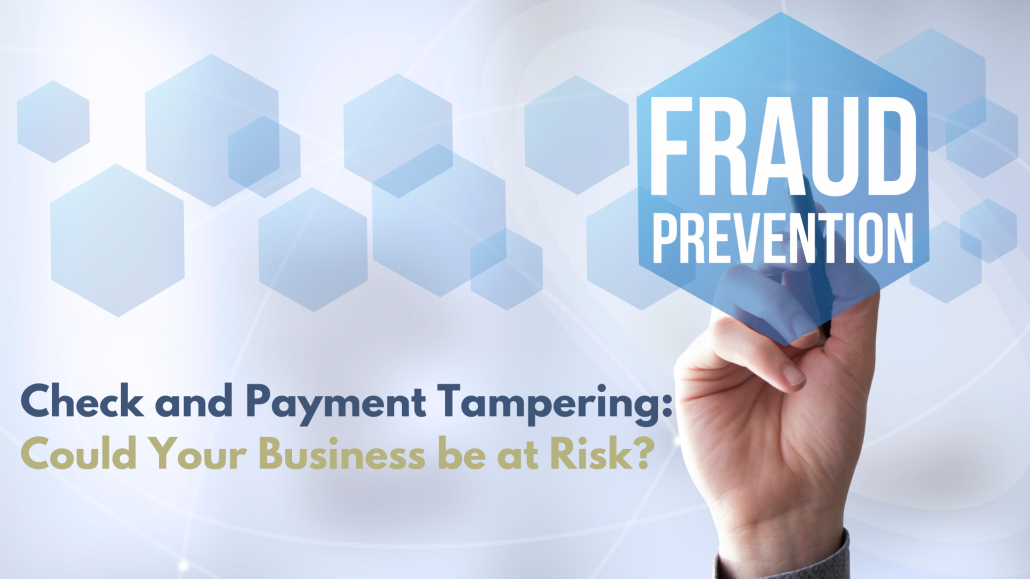
Asset misappropriation is a form of fraud that involves the theft or misuse of company assets for personal gain. It is a significant concern for businesses of all sizes, including non-profits, and it can lead to substantial financial losses if left unchecked.
One of the most common forms of asset misappropriation is check and payment tampering, which involves the unauthorized alteration of checks or payment records. In this blog post, we will discuss what check and payment tampering is, provide an example of check tampering, and share tips on how to prevent it.
What is check and payment tampering?
Check and payment tampering is a type of asset misappropriation that involves altering checks or payment records for personal gain. This can include forging signatures, changing payee information, or altering the amount of the check. Check and payment tampering can occur at any stage of the payment process, from the creation of the check to the final payment of the invoice.
Check tampering example:
For example, an employee might alter the payee information on a check to make it payable to themselves or a friend. They might then deposit the check into their personal account or cash it at a check-cashing establishment. Alternatively, an employee might alter the amount of a check, making it larger than the original amount. They might then cash the check or deposit it into their account.
How to prevent check and payment tampering?
Fortunately, there are steps that businesses can take to prevent check and payment tampering. One of the most effective methods is to implement strong internal controls that limit the opportunities for fraud. Here are some tips to help protect your business from check and payment tampering:
1. Segregation of duties
Segregation of duties is an essential element of internal control that separates the tasks of authorizing, recording, and handling cash and checks. This helps ensure that no single individual has complete control over the payment process, reducing the risk of fraud. For example, one employee could be responsible for creating checks, while another is responsible for signing them. A third employee could then be responsible for reconciling bank statements and tracking all outgoing payments.
2. Monitor transactions and bank statements
Monitoring transactions and bank statements can help identify suspicious activity and unauthorized transactions. Regular reviews of bank statements can help ensure that all transactions are legitimate and authorized. Any discrepancies or unauthorized transactions should be reported to management immediately.
3. Train employees on fraud prevention
Training employees on fraud prevention can help raise awareness of the risks of asset misappropriation and encourage employees to report any suspicious activity. Employees should be trained on the importance of maintaining segregation of duties and on the proper handling of checks and other payment documents.
4. Use technology to protect against fraud
Technology can be a powerful tool in the fight against fraud. Businesses should consider using software that can track all incoming and outgoing payments and detect any unusual activity. This can include monitoring changes to payee information, changes to the amount of the check, or unusual patterns of payments.
Check and payment tampering is a significant risk for businesses of all sizes. However, by implementing strong internal controls, monitoring bank statements, and training employees on fraud prevention, businesses can reduce the risk of asset misappropriation.
How can we help?
At Nelson & Associates, CPAs, we specialize in helping businesses protect themselves against fraud and other financial crimes. We can work with you to develop, document and implement internal controls that are tailored to your business’s unique needs.
Contact us today to learn more about how we can help protect your business.
Disclaimer: The information provided on this website does not, and is not intended to constitute as legal or financial advice; instead, all information, content, and materials available on this site are for general informational purposes only. Additional facts, facts specific to your situation may affect information contained herein. Information on this website may not constitute the most up-to-date legal or other information. This website may contain links to other third-party websites. Such links are only for the convenience of the reader, user or browser; Nelson & Associates, CPA’s does not confirm the validity of the contents of the third-party sites.


